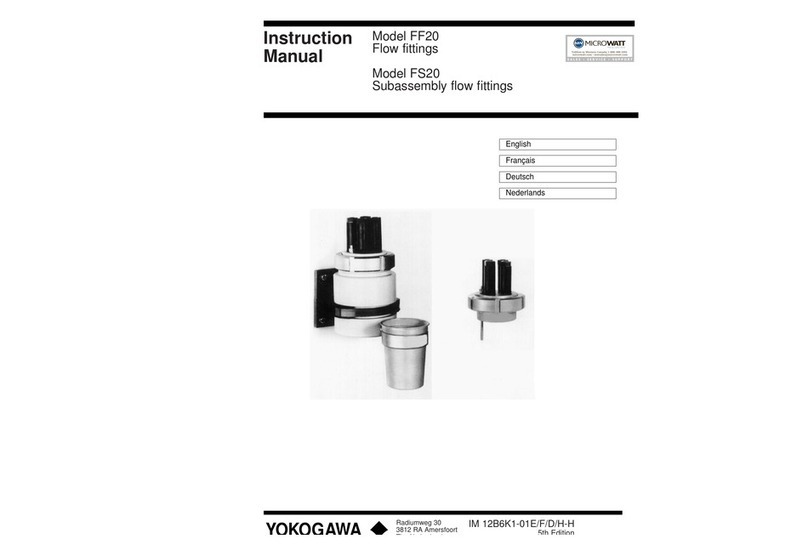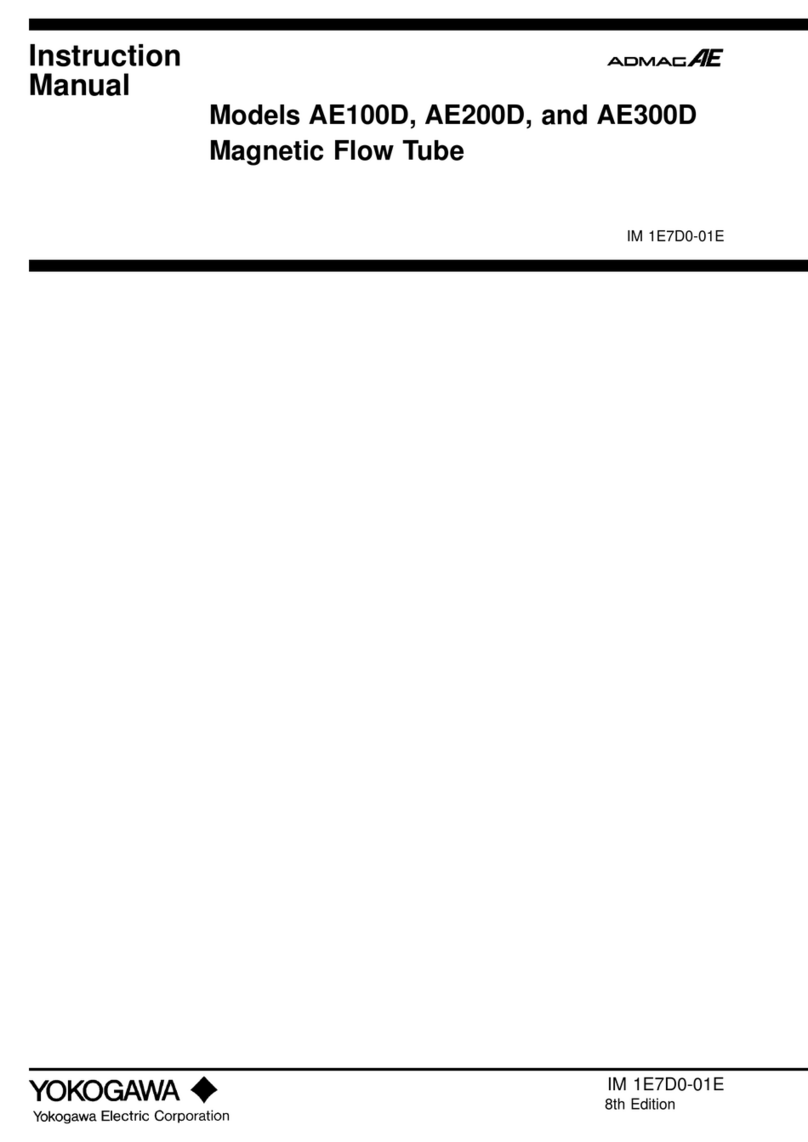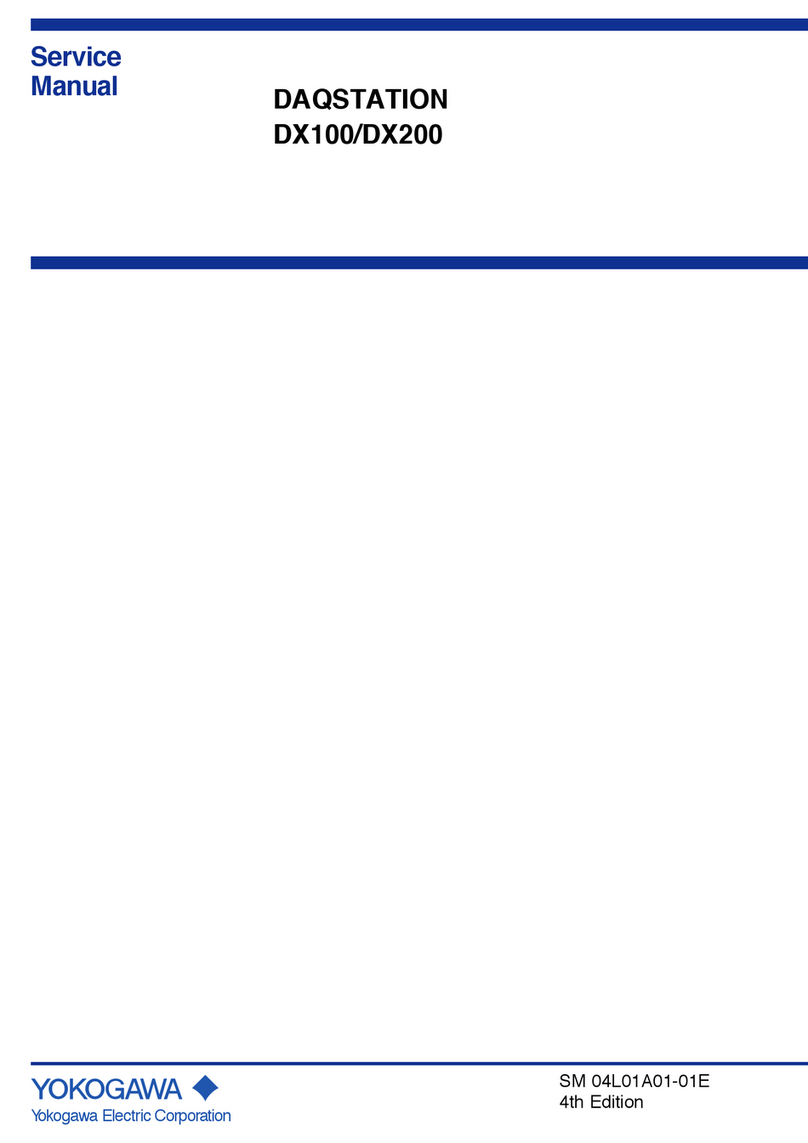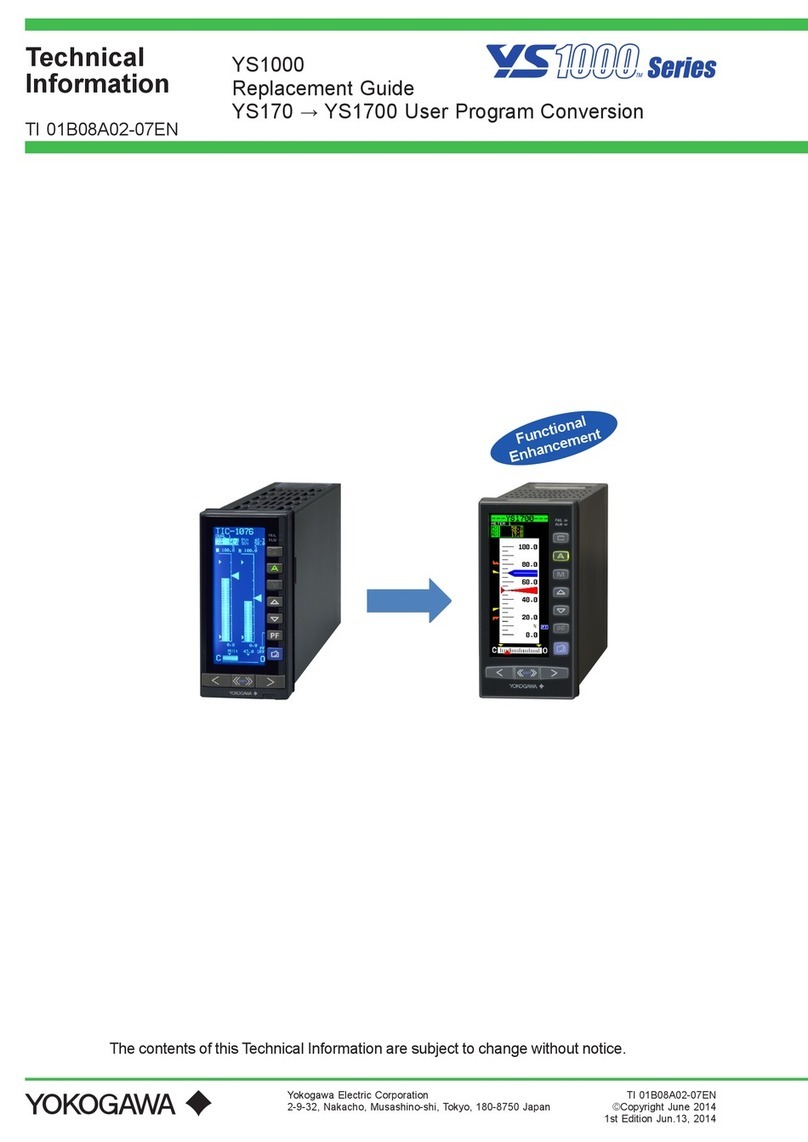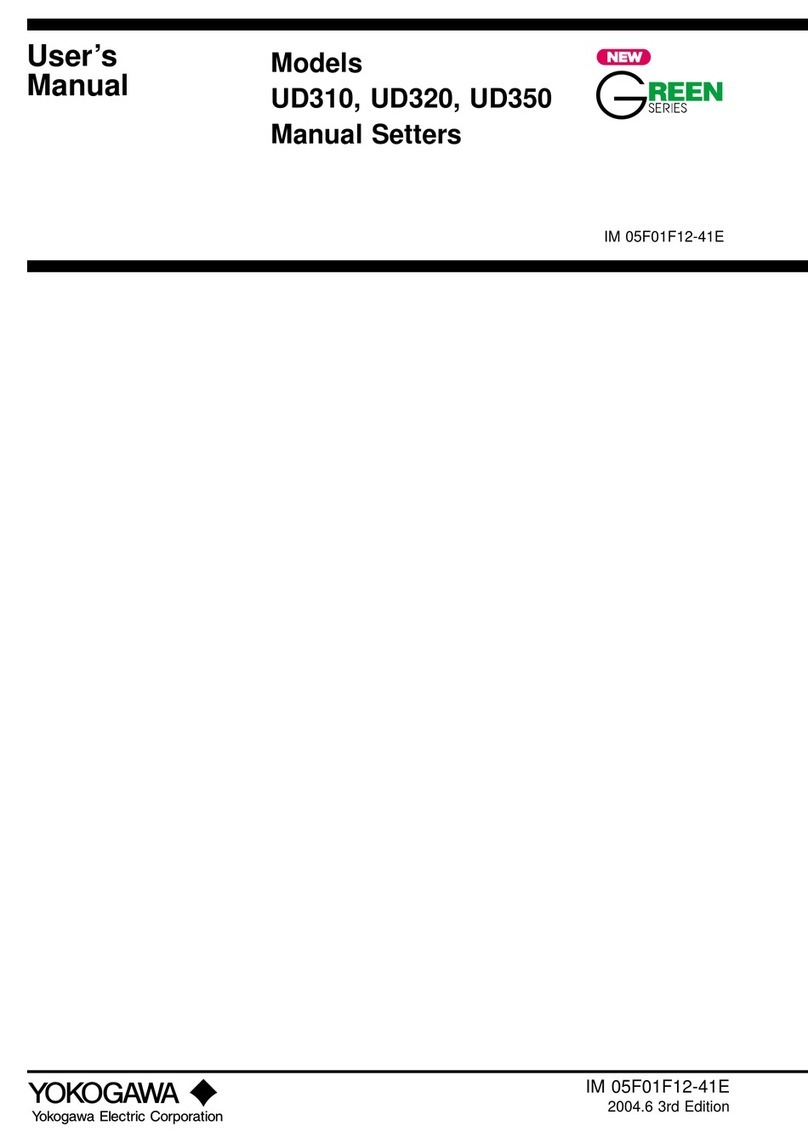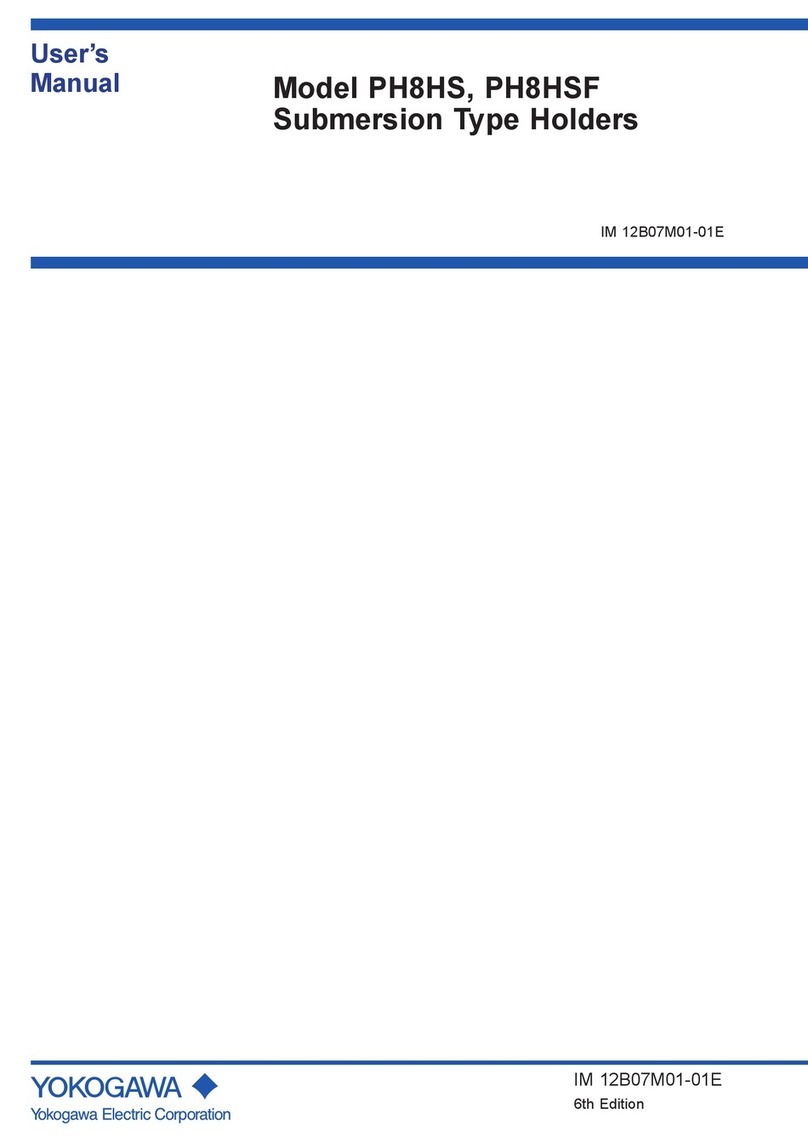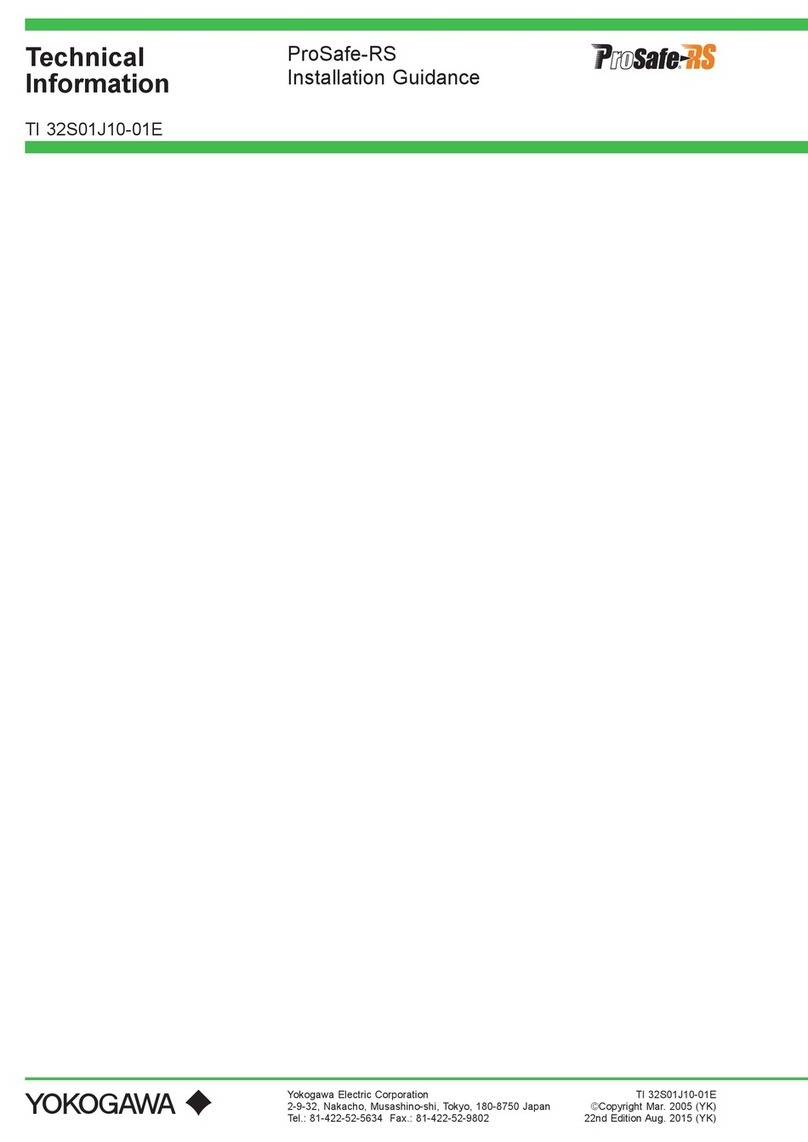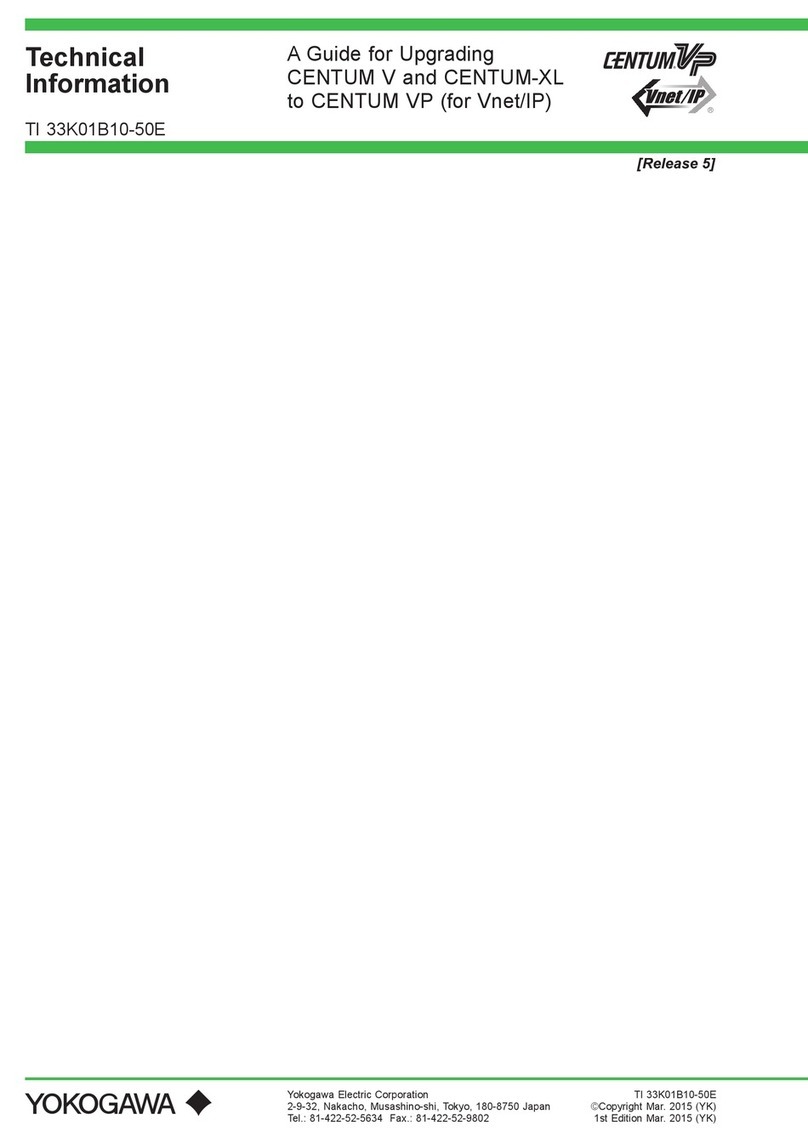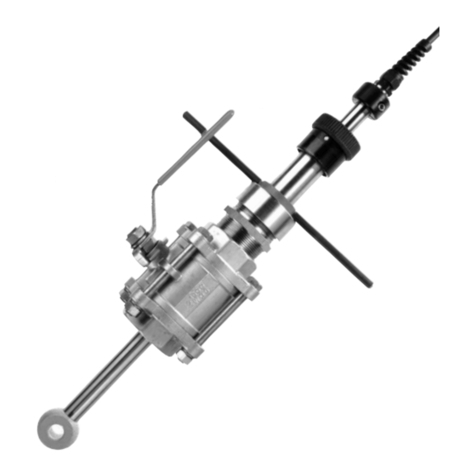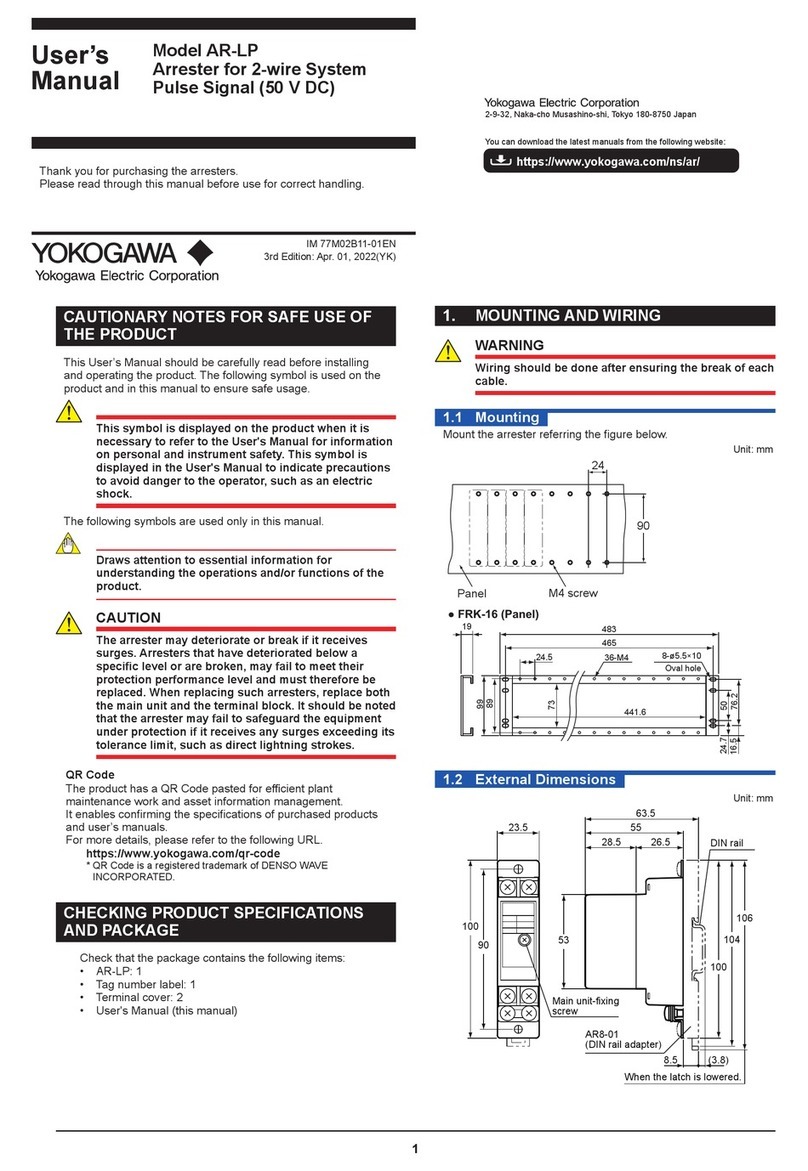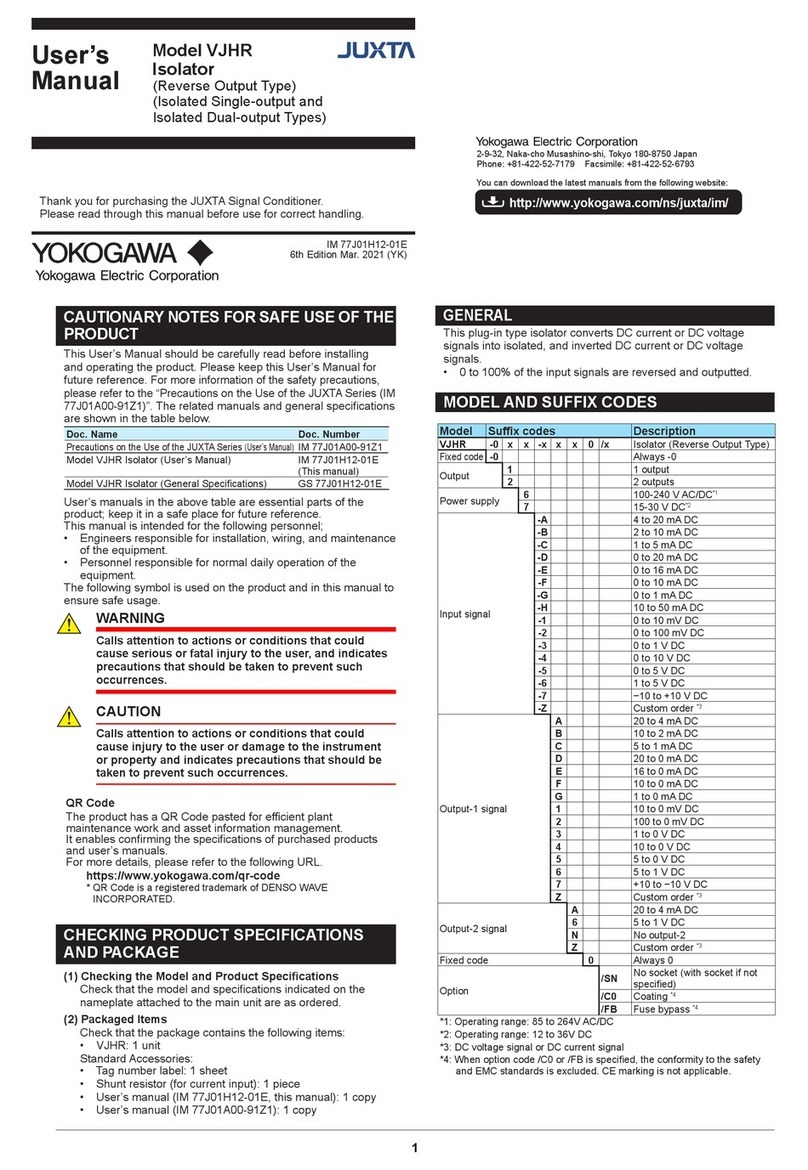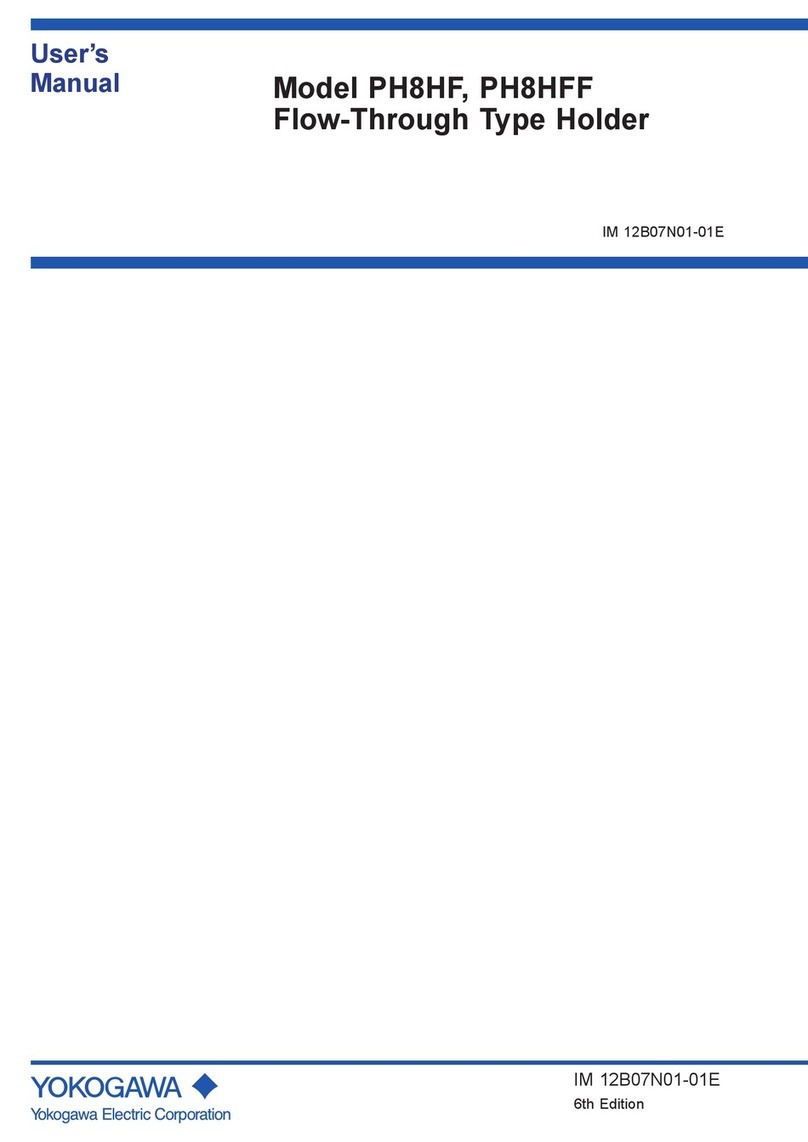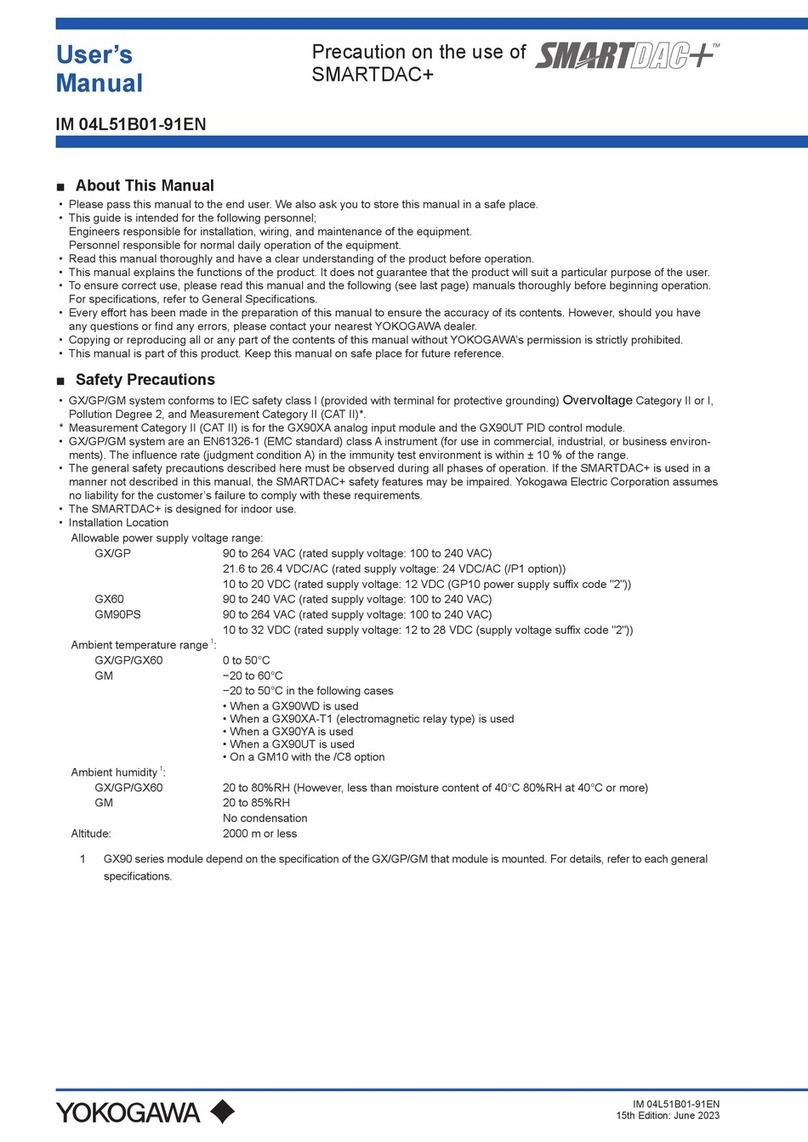
ii
TI 32P01J10-01EN
Safety Precautions
Safety, Protection, and Modication of the Product
• In order to protect the system controlled by the product and the product itself and ensure
safe operation, observe the safety precautions described in this Technical Information
and the User’s Manuals. We assume no liability for safety if users fail to observe these
instructions when operating the product.
• If this product is used in a manner not specied in this Technical Information, the protection
provided by this product may be impaired.
• If any protection or safety circuit is required for the system controlled by the product or for
the product itself, prepare it separately.
• Be sure to use the spare parts approved by Yokogawa Electric Corporation (hereafter
simply referred to as YOKOGAWA) when replacing parts or consumables.
• Do not use the accessories (Power supply cord set, etc.) that came with the product for any
other products.
• Modication of the product is strictly prohibited.
• The following symbols are used in the product and this Technical Information to indicate that
there are precautions for safety:
Indicates that caution is required. This symbol for the Product indicates the possibility of
dangers such as electric shock on personnel and equipment, and also indicates that the
user must refer to the User’s Manuals for necessary actions. In the User’s Manuals, this
symbol is used together with a word “CAUTION” or “WARNING” at the locations where
precautions for avoiding dangers are described
Indicates that caution is required for hot surface. Note that the devices with this symbol
become hot. The risk of burn injury or some damages exists if the devices are touched or
contacted.
Identies a protective conductor terminal. Before using the Product, you must ground the
protective conductor terminal to avoid electric shock
Identies a functional grounding terminal. A terminal marked “FG” also has the same
function. This terminal is used for grounding other than protective grounding. Before
using the Product, you must ground this terminal.
Indicates an AC supply.
Indicates a DC supply.
Indicates the ON state. The state of a power on/o switch and others is indicated.
Indicates the OFF state. The state of a power on/o switch and others is indicated.
Oct. 5, 2018-00
